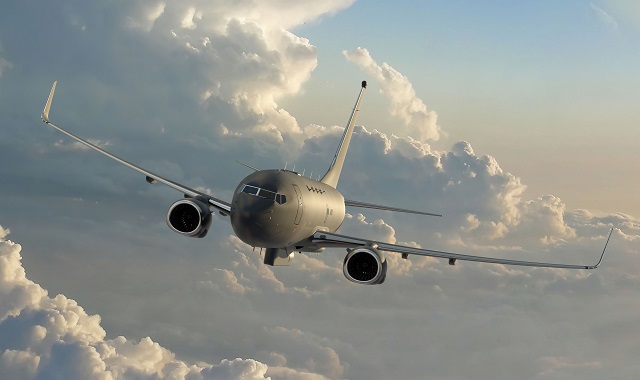Raytheon and Northrop Grumman have raised their hands to participate in a radar engineering project tied to the US air force’s approximately $9 billion acquisition of “JSTARS” business jets for wide-area airborne surveillance and battle management.
The two leading providers of active electronically scanned array (AESA) radars have been in the running for JSTARS for some time, although Raytheon Space and Airborne Systems is making more noise about its “Skynet” offering than Northrop Grumman Electronic Systems, which hasn’t yet named its alternative sensor. Neither side is exclusively teamed at this point.
Northrop, Lockheed Martin and Boeing have emerged as the frontrunners to replace the fatigued Northrop E-8C JSTARS platform that is based on second-hand Boeing 707-300s, after a Sierra Nevada/Intuitive team missed out on one of three risk-reduction contracts awarded in August.
According to an air force notice published on 19 November, the service plans to award additional risk-reduction contracts for “up to two US-based original equipment manufacturers of wide-area surveillance radars” by fiscal year 2017 for a stand-alone effort to mature the competing radars ahead of delivery of one type to the winning industry team – during the planned JSTARS engineering and manufacturing development phase.
The risk-reduction project would also mature manufacturing plans, and the first test radar would be due two years into the development schedule – likely 2019 or 2020.

Northrop Grumman, Lockheed Martin and Boeing have assembled JSTARS teams.
US Air Force
In emails to Flightglobal this week, Raytheon and Northrop both confirmed they are formally responding to the programme office’s 19 November sources-sought notice. Each stands ready to support the radar risk-reduction effort if initiated.
“The Raytheon radar offers high technical and manufacturing readiness levels, making it uniquely positioned to provide this customer with a low-risk path to initial operating capability,” says the Raytheon side. “Its open systems architecture and commercial off-the-shelf (COTS) based processors also enable seamless capability upgrades by the air force and third parties.”
Northrop Grumman Electronic Systems said it responded on 23 November and will support the air force by working with suppliers “to reduce early schedule risk for a fast-paced programme”.
The radar, with its synthetic aperture radar and ground moving target indicator modes, is one of several critical components of the full-up JSTARS weapon system, to include the business jet platform, onboard battle management and command-and-control stations, and communications equipment. Any delay in its development could significantly slow the overall development effort.
Raytheon’s Skynet radar is derived from its highly classified Advanced Airborne Sensor (AAS) that is being flight tested on the Boeing P-8A submarine hunter.
The key differentiator between today’s 7.3m (24ft) side-looking APY-7 passive electronically scanned array antenna on the E-8C and the new radar will be its ability to detect slow-moving, human-sized targets at great distances, and from a smaller 4.3m (14ft) to 6.1m (20ft) array that must consume less power to be supported by a business jet, according to industry officials. The air force wants 17 aircraft in total.
Source: FlightGlobal.com



















